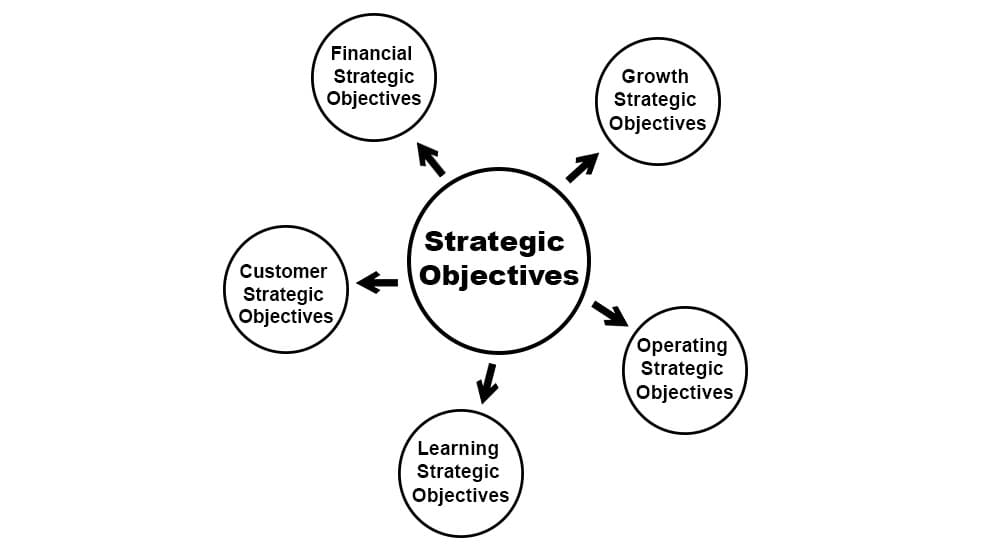Definition: A strategic objective is a high-level goal for an organization. It describes measurable steps to achieve a goal and sets the deadline for an organization. A strategic objective is specific and measurable.
Strategic objectives help businesses align with organizational goals and improve decision-making and productivity. It affects the whole organization and its culture.
Types of Strategic Objectives

Strategic objectives can be of the following types:
- Financial Strategic Objectives
- Growth Strategic Objectives
- Operations Strategic Objectives
- Learning Strategic Objectives
- Customer Strategic Objectives
Financial Strategic Objectives
These strategies let organizations focus on financial needs such as where to spend money, where they can cut costs, reviewing cash flow, analyzing financial growth, etc. Here, they can project profiles, determine a budget for the organization and the departments, etc.
Examples
- Increase profits by 10% in the next five years
- Increase spending on marketing by 25%
- Decrease overhead cost by 10%
- Provide bonuses to shareholders
- Increase sales by 20% in the next two years
Growth Strategic Objectives
Growth strategic objectives help organizations expand their footprints. These are long-term plans where organizations outline exact steps on how they will expand their business. They can enter new markets with current products or launch new products in existing markets.
Examples
- Launch two new products in the next year
- Expand presence in three new geographic areas
- Acquire 10% more distribution to increase market share
- Acquire startup companies to increase the portfolio
Operations Strategic Objectives
Here, businesses can set objectives so they can improve their processes to increase efficiency and reduce product errors.
Examples
- Use simpler processes to improve efficiency
- Use standard parts to reduce cost
- Invest in research and development
- Increase the production by 10% in one year
- Reduce wastage by 50% in the next two years
- Improve interdepartmental communication
- Establish two strategic alliances in the next six months
Learning Strategic Objectives
Skillful employees perform better. Organizations can set learning strategic objectives to train employees so they can perform better and reduce process errors. Strategic learning guides what training organizations offer to their employees.
Examples
- Provide training via a particular course to employees
- Offer two training sessions per month to a group of employees
- Send senior managers to overseas branches to learn skills
- Offer employees further education opportunities
- Offer certificate programs
- Conduct HSE training
- Create a knowledge base and encourage employees to use it
Customer Strategic Objectives
This strategic objective is applicable to organizations’ services to customers. Organizations can set customer strategic objectives to improve customer service, user experience, etc.
Examples
- Shorten waiting periods by 25% in the next three months
- Increase customer satisfaction by 80% in one year
- Offer incentives or coupons to repeat customers
- Create a brand loyalty program
- Offer free delivery
- Achieve 90% customer retention rate
- Optimum utilization of customer database
Summary
Strategic objectives are the top layer of the strategic plan of organizations. They provide direction to an organization and make the decision-making process easy. This creates a boundary that an organization strives to achieve. Once the objectives are achieved, organizations can create new strategic objectives.
